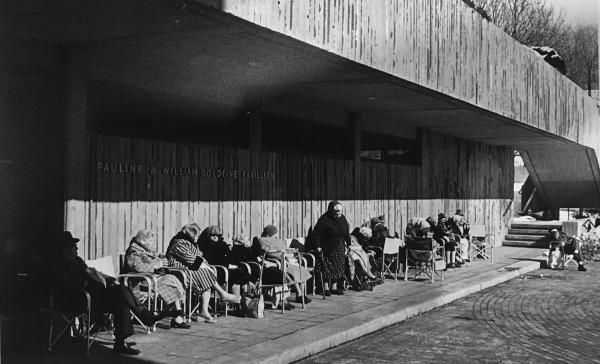Two Doctoral Candidates Receive Carter Manny Citation of Special Recognition

Two UTSOA students – Kathleen Powers Conti, doctoral candidate in Architecture and Historic Preservation, and Willa Granger, Ph.D. candidate in Architectural History – were recently honored with the Graham Foundation’s Carter Manny citation of special recognition. Established in 1996, the Carter Manny Award program supports the completion of outstanding doctoral dissertations on architecture and its role in the arts, culture, and society. The only pre-doctoral award dedicated exclusively to architectural scholarship, the Carter Manny Award recognizes emerging scholars whose work promises to challenge and reshape contemporary discourse and impact the field at large.
The Graham Foundation announced this round of Carter Manny Award winners in late October, which included awardees from both the 2019-2020 and 2020-2021 cycles. Conti and Granger were two of only five doctoral candidates to receive the 2020-21 citation of special recognition and were selected by a review panel comprised of Jay Cephas (Northeastern University), John May (Harvard University), and Anooradha Iyer Siddiqi (Barnard College).
At UTSOA, we believe the study of history provides the connection, context, and roots central for the identity of who we were, who we are, and who we might be. The history of architecture as a field within the broad intellectual discipline of history has a special role in helping us understand the built environment and how it affects our lives, and Kathleen and Willa’s research continues that important investigation.
“Tell It Like It Was”: Race, Memory, and Historic Preservation in the American South by Kathleen Powers Conti
Dissertation Co-Chairs: Dr. Christopher Long (Architecture) and Dr. Daina Berry (History)
Kathleen Powers Conti’s dissertation “Tell It Like It Was”: Race, Memory, and Historic Preservation in the American South interrogates how historic preservation perpetuates racial inequality, and how it can instead become a form of restorative justice. Her project illuminates an ecosystem that encourages historic sites to present white-centric narratives, fostering legacies of violence and discrimination. It also offers new tools for curating more inclusive histories through collaborating with Black, Indigenous, and People of Color (BIPOC) communities to convert these historic spaces into sites of restorative justice. Transforming racist narrative remains one of the most challenging areas within historic preservation, but as civil rights activist Fred Shuttlesworth said, “If you don’t tell it like it was, it can never be as it ought to be.” Excerpts of her work will be published in two forthcoming edited collections, Space Unlocked, History Unfrozen: Revisiting the Past in Museums and Historic Sites and Architecture of Slavery: Ruins & Reconstructions.
Constructing Old Age: Race, Ethnicity, Religion, and the Architecture of Homes for the Aged by Willa Granger
Supervised by Dr. Sarah Lopez (Architectural History)
Willa Granger’s dissertation Constructing Old Age: Race, Ethnicity, Religion and the Architecture of Homes for the Aged unearths the architectural and social history of the present-day nursing home. By charting the protean building culture of senior housing, this research reveals how the early home for the aged was once an intimate social endeavor physically embedded within the bonds of volunteerism and mutual aid. As this work argues, the growing medicalization, regulation, and “discovery” of eldercare across new professional domains shifted this former model from repurposed homes to monumental edifices, to hospital-like campuses. Willa’s research ultimately hinges upon how the built environment – including its practitioners – played a role in the age-segmentation of the US landscape. As part of this research, Willa traveled to archives and contemporary nursing homes throughout Philadelphia, Chicago, and New York, conducting on-site field research and interviews with residents, administrators, family members, and social workers. This work has been supported by the American Association of University Women (Austin), the Vernacular Architecture Forum, and the Southeastern Society of Architectural Historians.

